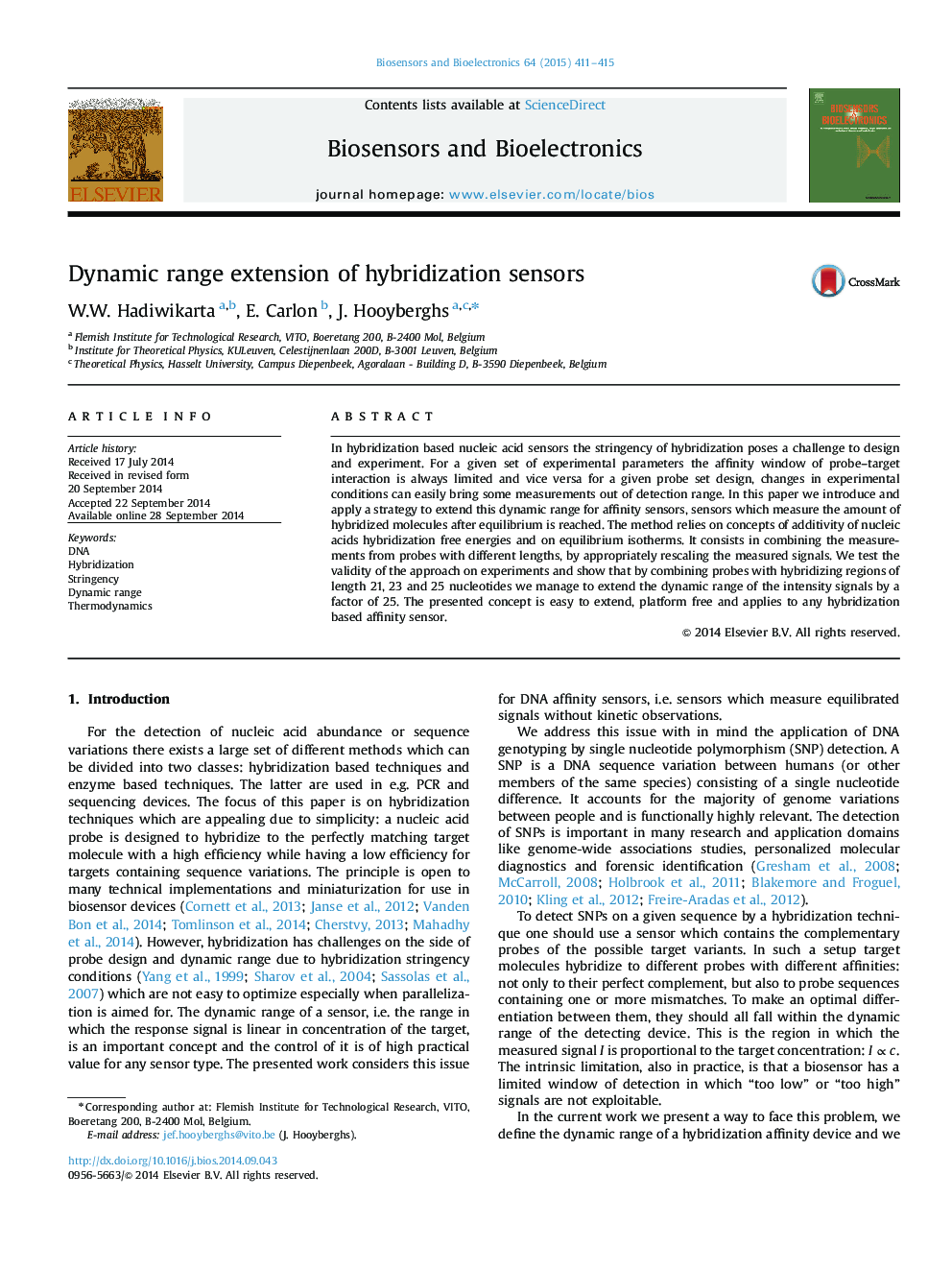| Article ID | Journal | Published Year | Pages | File Type |
|---|---|---|---|---|
| 7232977 | Biosensors and Bioelectronics | 2015 | 5 Pages |
Abstract
In hybridization based nucleic acid sensors the stringency of hybridization poses a challenge to design and experiment. For a given set of experimental parameters the affinity window of probe-target interaction is always limited and vice versa for a given probe set design, changes in experimental conditions can easily bring some measurements out of detection range. In this paper we introduce and apply a strategy to extend this dynamic range for affinity sensors, sensors which measure the amount of hybridized molecules after equilibrium is reached. The method relies on concepts of additivity of nucleic acids hybridization free energies and on equilibrium isotherms. It consists in combining the measurements from probes with different lengths, by appropriately rescaling the measured signals. We test the validity of the approach on experiments and show that by combining probes with hybridizing regions of length 21, 23 and 25 nucleotides we manage to extend the dynamic range of the intensity signals by a factor of 25. The presented concept is easy to extend, platform free and applies to any hybridization based affinity sensor.
Related Topics
Physical Sciences and Engineering
Chemistry
Analytical Chemistry
Authors
W.W. Hadiwikarta, E. Carlon, J. Hooyberghs,
